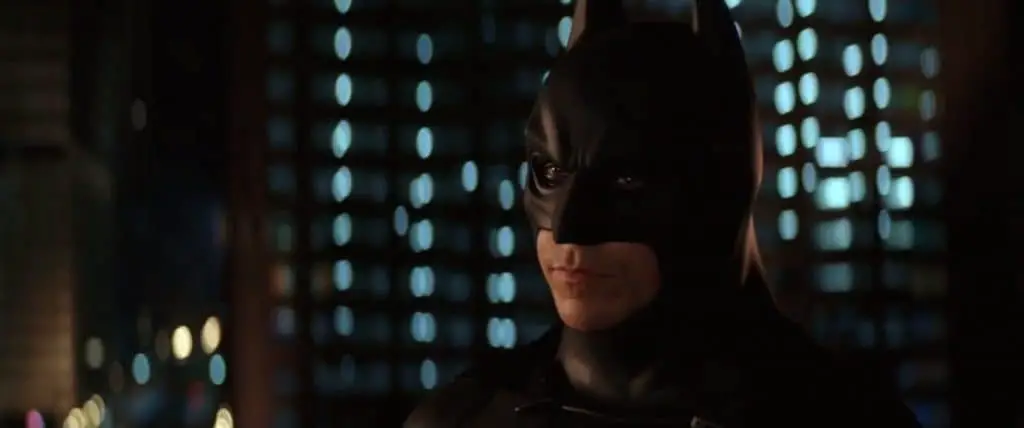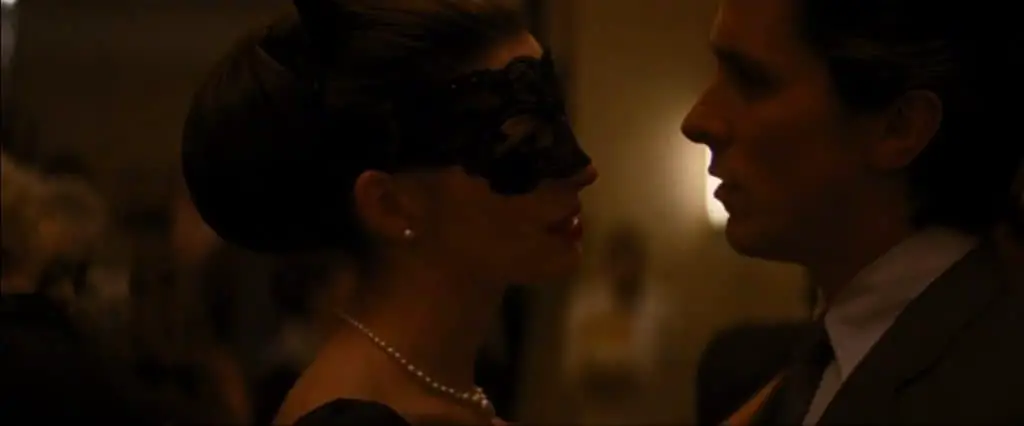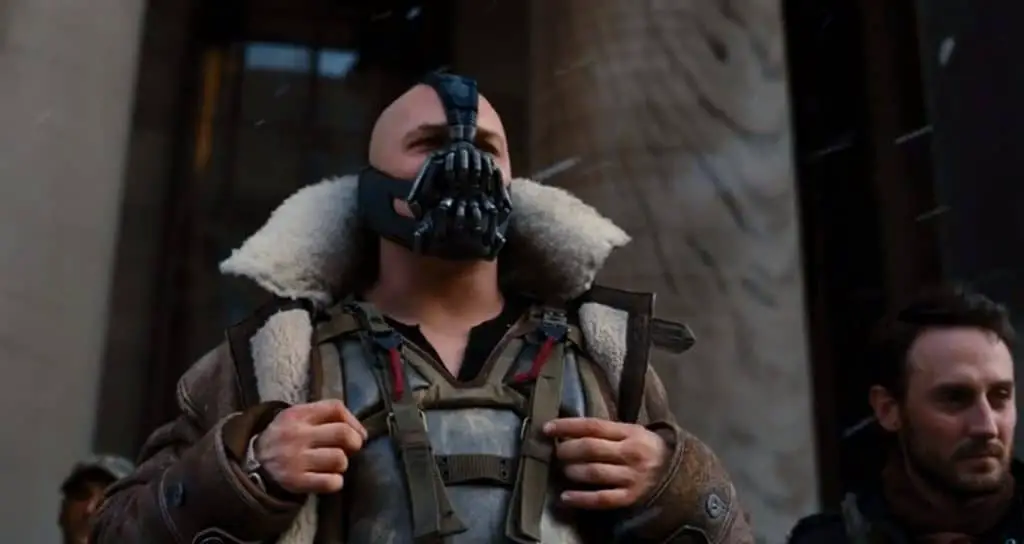Christopher Nolan’s “The Dark Knight” – Batman Like No Others
Batman is a character that everyone knows, and who has gone through more than one screen incarnation. Who just took on this role: from the young and charming Michael Keaton, who starred in a partly biographical film “Birdman” in adulthood, to 40-year-old Ben Affleck, whose sad expression has become one of the most popular Internet memes. The same can be said for filmmakers. Tim Burton and Joel Schumacher gave us something like a fairy tale, Zach Snyder – classic superhero films in the spirit of the second half of the 2010s.

Batman performed by Christian Bale was remembered by many
In fact, each series of Batman films can be said to be unique in its own way. Still, Christopher Nolan’s trilogy with Christian Bale in the title role stands a little apart, because it is not like not only other series of films about the “bat-man”, but also films about superheroes in general. Perhaps only this trilogy managed to somehow convey the gloom, hopelessness and despair with which many DC comics are saturated, and which significantly distinguish this universe from the Marvel universe.
begining
The first film in the series was released in 2005 and, as expected, blew up the world box office, and not only fans of DC, Batman, Christopher Nolan or Christian Bale sang laudatory odes to him, but also numerous professional critics, who had not been too fond of films of this kind.
Classic childhood story
It all starts with a world-old story of the origin of our beloved hero. He is afraid of bats, he loses his parents at the age of eight, he becomes attached to his butler and he inherits a multimillion dollar fortune. The hearing in the case of the murder of the Wayne couple has been going on for many years and does not end with anything, and Gotham City, meanwhile, is getting deeper and deeper in vices and crime. And then everything is a reflection of the real state of affairs, albeit exaggerated, artistic and metaphorical.
Dark, gloomy and realistic
This film shows the problems as real, frightening. They do not try to present banditry as something insignificant and easily removable, the work of stupid unlucky villains, to defeat whom the hero only needs to give them a few kicks. It is as if they say here: “Look at this city and look at your world. Is there such a big difference between them? When did you stop seeing what was really happening? ”
Growing up, Bruce Wayne finds solace in an organization called the League of Shadows, which must help him gain the strength to save his hometown. But this film would not be itself if the mentors of the future Batman turned out to be good-natured sensei, generously sharing their wisdom with him. Instead, they decide to destroy the desecrated, bleeding, violent Gotham.

The role of the main antagonist of the first part went to Liam Neeson
Reincarnation of Bruce Wayne as Batman
Against the background of this seemingly inevitable catastrophe, Batman becomes a savior. Here appears a modern version of the classic superhero costume, and his “cave”, and various proprietary devices for fighting crime, and, of course, the Bat-signal. The villains are defeated, the friends of the protagonist are still saved, but this does not mean that the audience will be allowed to breathe freely. The foreboding of catastrophe, the atmosphere of a serious illness that has struck Gotham City, which cannot be simply uprooted, remains hanging in the air and suggests that there will be no absolute happy ending here.

It is at this moment that the classic phrase “I am Batman” will sound
The Dark Knight
The second part of the series became a classic almost immediately after its release. This, of course, has a lot to do with the brilliant performance of Heath Ledger, who posthumously won an Oscar for his role as Joker. With all due respect to the incredible Jack Nicholson, who played this role in the films of Tim Burton, or, for example, to the psychedelic performance of Jared Leto in Suicide Squad, Ledger’s play can be called a masterpiece without a twinge of conscience. Died in his prime, the actor may partly owe his depressed state to how deeply and deeply he got used to each role. His Joker is a character in which everything is thought out and implemented 100%.
Souls turned inside out
In the sequel to The Dark Knight, the fight against crime and attempts to save the city fade a little into the background. The viewers’ attention is focused on people, on their destinies, behavior, relationships, on their moral qualities and a sense of duty. In this film, the writers finally prove to us that we are not watching a family film ending with “and they lived happily ever after,” but a picture that we were not afraid to embellish with suffering and pain. The writers mercilessly kill Bruce Wayne’s childhood friend Rachel Dawes, and they also tell us that she was in love with Harvey Dent, not Batman.
Harvey Dent, “The White Knight of Gotham,” the protector of the common people and incorruptible district attorney, goes crazy over the death of his beloved. And this line is perhaps more important than all the other plot twists in the film. What would each of us do if the love of his life were mercilessly killed? Can you continue to believe in justice, strive to be good and act in accordance with the law if you are faced with injustice so closely? Harvey can’t. And we observe how one of the strongest characters breaks awkwardly, rudely, to a crunch in the bones, becoming someone completely different.
The Joker’s imperfect plan

The Joker tells a different story every time about how he got his scars.
The Joker adjusts this and much more, takes hostage a significant part of the city, but only one thing is miscalculated: people are far from always ready to kill other people in order to save themselves. And this is perhaps the only bright spot in the whole story, because it ends sadly. Harvey dies, and Batman, in order not to kill hope in people, takes the blame for all his wrongdoings. Simply because sometimes you have no choice but to sacrifice yourself for the sake of others.
Rebirth of a legend
The final part of the trilogy is replete with events, new characters and increasingly harsh turn the plot upside down. Bruce Wayne is surrounded on all sides by either friends or enemies, his company is ruined, his friend is almost killed, his city is being destroyed, and he has two new girlfriends, of which the most dangerous, of course, turns out to be the one that looks the most inspiring confidence.
Thickening clouds
With all this jumble, Christopher Nolan, the writers, actors and all the people who worked on the film manage to cope almost to the highest mark. In fact, all this is not a whim and not an insufficient study of the plot. All this is necessary to make the audience nervous. We must feel that everything we have seen so far was not so scary. We must see absolute evil and absolute hopelessness, as well as sprouts of humanity sprouting from the mud.

Anne Hathaway played Catwoman in this film.
The bomb that can turn the entire city into a gaping crater strewn with the remains of human bodies does not seem like an ephemeral fiction in The Rebirth of a Legend, which the hero can deal with with a snap of his fingers. She hangs right over the audience with the eternal question: is good capable of defeating evil? And this is not the case when we know in advance that everything will go well. This is the case when you understand: if everything ends badly on the screen, you will not be able to recover for several hours after you finish watching the movie.

Bane became the main supervillain in the third part.
Relatively light end
Fortunately, the film in particular and the trilogy in general ends on a positive note. Suffering, shabby, tortured – but still a good end, despite all the bad things that preceded it. Christopher Nolan’s “Batman” is not what popular comic-book films usually are. But this does not make him less beautiful.







